May 24, 2025 | 16:26 GMT +7
May 24, 2025 | 16:26 GMT +7
Hotline: 0913.378.918
May 24, 2025 | 16:26 GMT +7
Hotline: 0913.378.918
Mrs. Le Thi Huong, former Director of Le Dinh Chinh Farm (Thang Long commune, Nong Cong district, Thanh Hoa province), has stuck with sugarcane for most of her life but has never seen sugarcane farming as bleak as in recent years. Even though she is out of working age, she still tries to cultivate 2 ha of sugarcane, not only to pay for daily living expenses but also because she wishes farmers would return to the locality’s traditional crops.
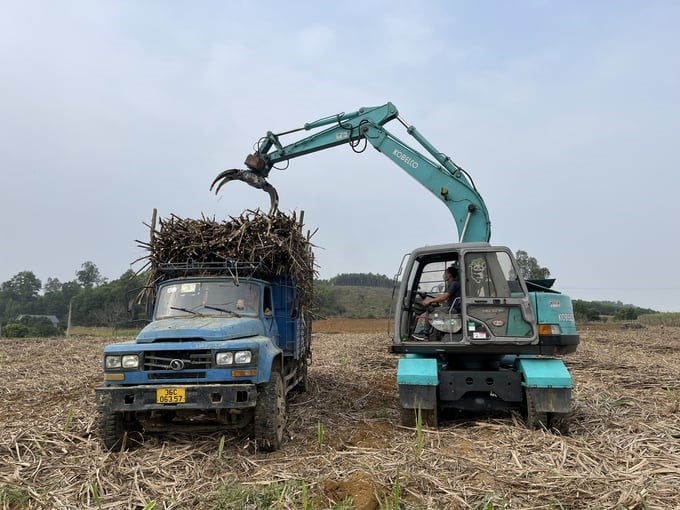
Harvesting sugarcane in Tho Lam commune, Tho Xuan district, Thanh Hoa. Photo: Quoc Toan.
Mrs. Huong said that previously, Thang Long commune was considered the "sugarcane granary" of Nong Cong district, with an area of about 260 ha (of which Le Dinh Chinh Farm managed about 200 ha). However, up to now, the entire commune’s sugarcane area has decreased very sharply to only 68 ha. Of which, Thang Long commune has only 8 hectares; the remaining area is managed by the farm.
“In the 2017-2019 period, sugarcane prices dropped and only remained at VND 750,000–800,000/ton, causing many sugarcane-growing households in the commune to no longer be interested in this crop and convert to growing cassava, acacia, and galangal, coffee, etc. Some other households still maintain the sugarcane farming profession in the hope that sugarcane prices will increase highly," Mrs. Huong shared.
Mrs. Huong said that with 2 ha of sugarcane, after deducting farming costs and agricultural supplies, her family only gains an annual income of about VND 60 million/crop/year. Although sugarcane does not bring a high income, her family is still determined to keep the profession because the output of sugarcane is still very stable.
“In the past, sugarcane was considered a plant for poverty eradication, but now growing sugarcane is only enough to cover daily living expenses. Therefore, young people are no longer interested in sugarcane but rush to work as leather shoe and garment workers. Older people stay at home to take care of the children, so when the harvest crop comes, most households have to hire labor at quite high prices. Some households still maintain sugarcane because the profit is low but the output is more stable than other crops," Mrs. Huong added.
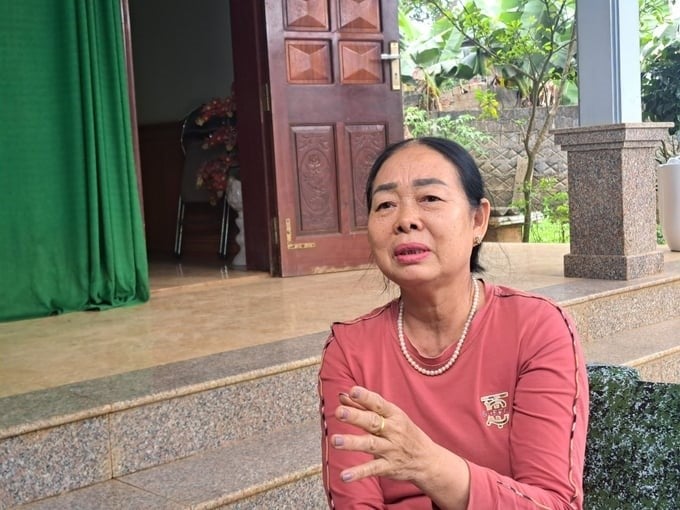
Mrs. Le Thi Huong, former Director of Le Dinh Chinh Farm, worries about sugarcane. Photo: Quoc Toan.
According to Mrs. Huong, there was a time when Le Dinh Chinh Farm discussed solutions to support households to revive the sugarcane farming profession, such as exemption from land management costs, support for fertilizers and seeds, etc. However, because the sugarcane area in the commune is mainly distributed on hills with high slopes, it is difficult to cultivate, so one after another quit the profession.
Sharing the same situation, Mr. Le Van Thien, Head of Dong Coc village (Xuan Phu commune, Tho Xuan), shared, "When growing sugarcane on a slope of 60 degrees, it only takes a few rains for the nutrients to be washed away. Therefore, sugarcane does not achieve the expected yield and quality. Farmers found that sugarcane could not bring high income, so they switched to growing acacia and cassava because of low capital investment, less care, and a higher value than sugarcane."
Tho Xuan district is considered the sugarcane "capital" of Thanh Hoa province. This is also the headquarters of the Lam Son Sugar Factory. In its golden age, there was a time when the whole district planted approximately 5,000 ha of raw sugarcane to supply processing factories. However,the current sugarcane area is only 1,600–1,700 ha, concentrated mainly in the communes of Tho Lam, Xuan Phu, and Xuan Thang. From 1986 to 2000, sugarcane was a poverty-eradication crop for many farmer households in Tho Xuan district. There was a time when farmers converted their rice fields to grow sugarcane when the price of raw sugarcane increased highly. But up until now, many people have no longer stuck with this crop.

People in Xuan Thang commune (Tho Xuan district) harvest raw sugarcane. Photo: Quoc Toan.
Xuan Phu commune (Tho Xuan district) used to be a large sugarcane region of Tho Xuan district with an area of about 500 ha and more than 1,000 households participating in production. The annual output of raw sugarcane supplied to Lam Son Sugar Factory reached 38,000–40,000 tons. Farmers here have been attached to sugarcane for many generations. However, in the past ten years, sugarcane prices have been unstable, forcing farmers to convert to growing cassava and acacia. Thereby, the sugarcane area decreased to only 27 ha, or even 7 ha in some years. Therefore, although Xuan Phu commune used to be a unit twinned with Lam Son Sugar Factory, over the years, the intimate relationship stemming from sugarcane is no longer as passionate as before.
Mr. Nguyen Huu Dung, Vice Chairman of the People's Committee of Tho Xuan District, said: When Lam Son Sugar Factory came into operation, many localities in the district accumulated land to focus on this staple crop. In addition to the alluvial land area, farmers in the district also took advantage of the hilly area to grow sugarcane. However, unfavorable terrain (high slope) has caused many difficulties when applying mechanization, increasing production costs and reducing profits. Therefore, in recent years, farmers have had to convert sugarcane areas to growing acacia and cassava.

Mr. Le Ba Chieu, Deputy General Director in charge of raw materials at Lam Son Sugar Company (right), exchanges with reporters. Photo: VH.
According to Mr. Dung, the narrowed sugarcane growing area is also due to the planning of industrial zones and residential infrastructure. The remaining area is converted to high-tech agricultural planning (about 2,500 ha).
According to the Thanh Hoa Sub-Department of Crop Production and Plant Protection, the sugarcane growing area in the whole province experienced a sharp decrease over the past 10 years. In 2015, the whole province had more than 32,100 ha of sugarcane land, but by the 2023–2024 crop year, the area was only more than 12,500 ha, decreasing by approximately 2.5 times. In the 2022–2023 and 2023–2024 crop years alone, over 1,800 ha of sugarcane land have been converted to other crops.
The sharp decrease in sugarcane area leads to a significant drop in sugarcane output supplied to sugar factories in the province. Mr. Le Ba Chieu, Deputy General Director in charge of raw materials at Lam Son Sugar Company, said that with an area of about 7,000 ha of linked growing areas, the sugarcane output supplied to the factory in the 2023–2024 crop year reaches 547,000 tons, only 50% of the output in the 2005–2017 period.
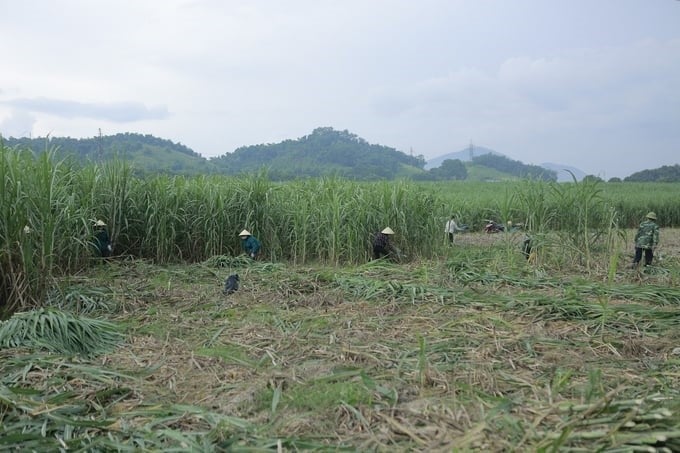
Farmers in Sao Vang town, Tho Xuan district, harvest sugarcane. Photo: Quoc Toan.
Farmers quit the sugarcane farming profession, causing sugarcane area and output to decline. Many sugar factories struggled, even did business at a loss or closed. Lam Son Sugar Joint Stock Company is no exception. This business used to have more than 1,000 officers and workers, but now there are only about 700 people left after restructuring its operations. Business leaders admit that the golden age of sugarcane has passed, and now a new cycle has begun - the cycle of reviving and recovering sugarcane.
In the 2024–2025 crop year, Thanh Hoa's sugarcane industry shows signs of recovery when the sugarcane growing area is estimated at 13.500 hectares, an increase of more than 1,000 ha over the previous crop year. Meanwhile, the price of sugarcane purchased at the field at the sugar factory reaches VND 12.5 million/ton, an increase of VND 400,000 compared to the sugarcane price in 2020. Along with that, the business has proposed a solution to restructure sugarcane varieties by applying tissue culture technology and selecting and storing high-quality sugarcane varieties to increase productivity and value per unit area.
With new varieties, the average raw sugarcane yield reaches 85 tons/ha or more for the intensive farming model and 100 tons/ha or more for the model applying synchronous mechanization. Production costs reduce by 20–25% compared to conventional farming. Households participating in the intensive farming model earn a profit of VND 60–65 million/ha; some households even earn a profit of VND 75–80 million/ha. In addition, to encourage sugarcane growers, the business has subsidized prices and seeds, improved soil, supported fertilizers for sugarcane growers, and purchased raw sugarcane at a higher price than other processing factories.
Mr. Le Ba Chieu, Deputy General Director in charge of raw materials at Lam Son Sugar Joint Stock Company, said that the ASEAN Trade in Goods Agreement (ATIGA) has a significant impact on the operations of Vietnam's sugarcane industry. Vietnamese sugarcane businesses have fewer advantages compared to regional countries in terms of production costs and productivity, while world sugar prices have declined, peaking in 2018.
Lam Son Sugar Factory went from a profitable business to breaking even. In 2021, the Ministry of Industry and Trade issued Decision No. 1578/QD-BCT on applying the anti-dumping duties and countervailing duties officially to some cane sugar products originating from the Kingdom of Thailand, thereby helping domestic sugar prices increase and people's incomes gradually improve significantly.
Translated by Huyen Vu Thu

(VAN) Pepper prices on May 23, 2025, are unchanged in the domestic market, trading at VND 150,000 to VND 152,000/kg. Pepper prices increased only in Indonesia.
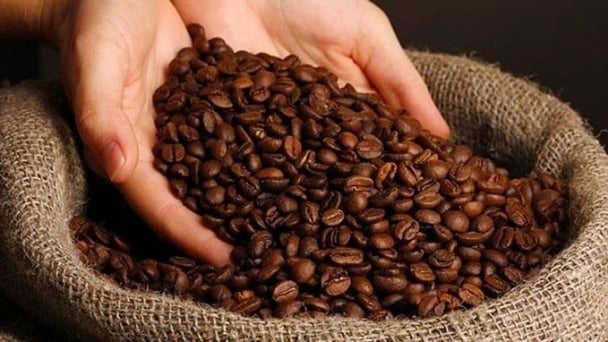
(VAN) Coffee prices on May 23, 2025, dropped by a further VND 2,500, trading at VND 122,500 – 123,200/kg. Global coffee prices also declined across the board.

(VAN) Coffee prices on May 22, 2025, slightly decreased by VND 500, trading at VND 125,000 – 125,700/kg. Global coffee prices showed mixed fluctuations.
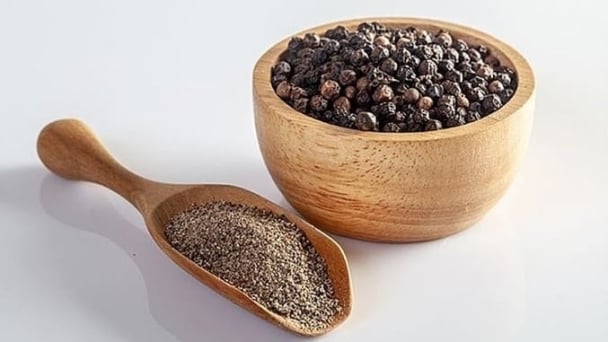
(VAN) Pepper prices on May 22, 2025, slightly decreased by VND 1,000, trading around VND 150,000 – 152,000/kg. Global pepper prices remained unchanged.

(VAN) Rubber prices on May 22, 2025 on the global market dropped significantly. Domestically, raw latex continues to be purchased at around VND 397 – 462/TSC.
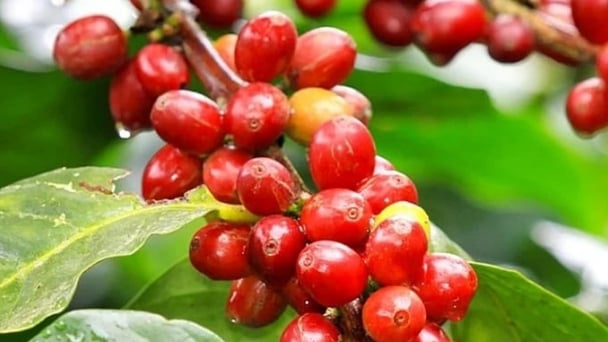
(VAN) Coffee prices on May 21, 2025, dropped sharply by VND 1,000, trading at VND 125,000 – 125,700/kg. Global coffee prices also reversed and declined.
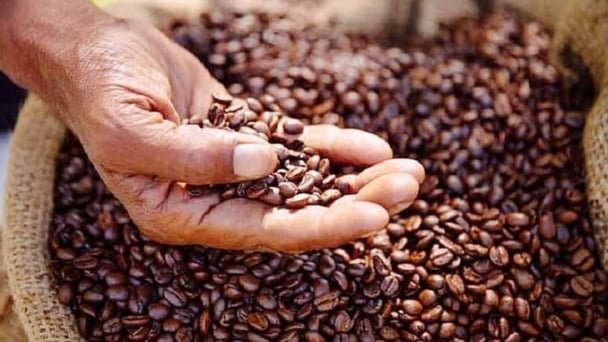
(VAN) Coffee prices on May 20, 2025, surged by VND 2,200, climbing to VND 126,000 – 126,700/kg. Meanwhile, global coffee prices also recorded a sharp increase.